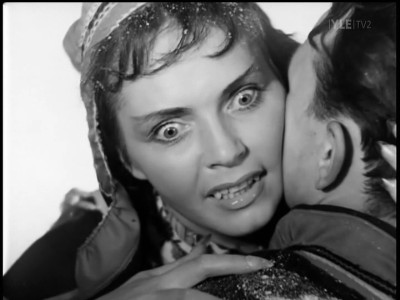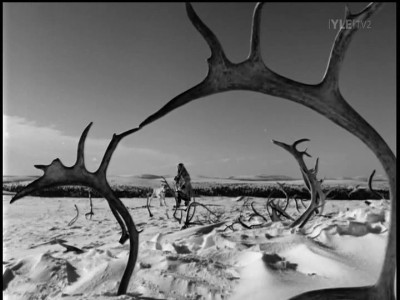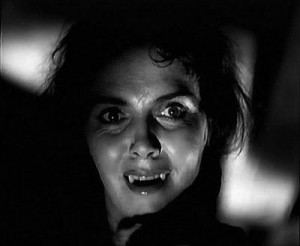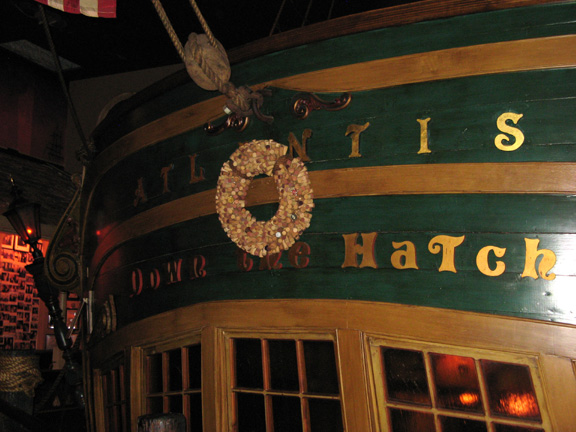 In late April, when THE NIGHTPORTERS: TELL IT LIKE IT IS premiered at The Plaza Theatre, it wasn’t your typical movie screening but a reunion. The crowd was mostly in their 40s and 50s. Many of these folks had families and didn’t stay out late any more. But that didn’t mean they never did and some still had the leather jackets to show for it. When they come out in Atlanta, you know you’re in for a special evening.
In late April, when THE NIGHTPORTERS: TELL IT LIKE IT IS premiered at The Plaza Theatre, it wasn’t your typical movie screening but a reunion. The crowd was mostly in their 40s and 50s. Many of these folks had families and didn’t stay out late any more. But that didn’t mean they never did and some still had the leather jackets to show for it. When they come out in Atlanta, you know you’re in for a special evening.
If you are old enough to have been part of the early ’80s nascent punk/new wave scene that revolved around the now-legendary 688 Club, you remember a handful of local bands that stood out. You never missed any of their shows, and they played all the time. Perhaps the coolest and most memorable of these bands was The Nightporters. That’s not to say they never had any crappy drunken gigs. They had plenty, but when they were at their best, they were as good as any band that topped the college alternative charts and many that made it big when real punk had faded into a careless memory.
Guitarist/singer/songwriter Ray Dafrico started with some raw found footage of the Nightporters performing, mostly at the Blue Rat Gallery, a notorious art space in the now-demolished Pershing Point Apartments which was ground zero for housing starving punk rockers back in the day. To that, he added interviews with band members and other key members of the scene such as Peter Buck (R.E.M.) and Rick Richards (Georgia Satellites). The end result is a time capsule not just of a band but of the clubs and people that made that period in Atlanta rock history so unique and a frozen moment in time when it seemed like music not just mattered but meant…well…everything.
With the movie now available on DVD, ATLRetro recently sat down with Ray to find out more about the genesis of this home-grown rockumentary, as well as what was so special, as the subtitle states, about “a time, a place and a band.”
ATLRetro: How did the idea of a Nightporters documentary get started?
Ray Dafrico: I got hold of some early footage a couple of years ago by a guy named James Farmer, who was one of the Blue Rat’s artists. There was footage of us that I had never seen. I thought it was really amazing and somebody should make a film and add some interviews. I didn’t know anyone else that would do it so I took it upon myself to start making it.
 There really seemed to be a special quality about the early ‘80s music scene in Atlanta. What do you think made that time so special?
There really seemed to be a special quality about the early ‘80s music scene in Atlanta. What do you think made that time so special?
I just think it was creative and kind of more innocent in a way. Maybe it was because we were so young that it all seemed new and fresh. Punk rock was fairly new. I was into music, but it seemed inaccessible. With punk rock, you could prove you could do stuff yourself. Once we started doing that, we had a small circle of people that just started growing. Atlanta was really small at the time. There were maybe 10 bands and everyone knew each other. Everybody pulled for each other for the most part and would come to each other’s shows. There was some competition between bands that played in midtown and bands that mostly played like in Buckhead, but eventually we got friendly with most of the bands in town. Nowadays it seems so competitive. There are so many bands. It seems like everybody’s out for themselves.
The Nightporters definitely had that punk rock spirit, but you had other influences, too.
We were influenced by punk rock, and we kind of sounded like punk rock, but the Sex Pistols just proved that you could go against the system and the corporate music of the 1970s. But the thing that brought the Nightporters together was more the ‘60s punk bands. Originally the Rolling Stones, but we really liked the more obscure bands that had one-hit wonders like The Count Five. So you’re right, we weren’t directly the late ‘70s kind of punk rock. We were sort influenced by it, but it was an enabling thing than anything else. Our sound was sort of garage mod rock with elements of glam, folk, country, ska and reggae.
How important was 688?
Very important at the time. They just booked some amazing bands. At first, we were underage and we couldn’t get in. It was the same with the Agora Ballroom. It was like we would go down there every weekend and try to get in. There was this long-haired guy at the door. He would call us “weekend anarchists” and kick us out. We tried to see the Plasmatics and all these bands. Finally he let us in to see the Ramones. We had borrowed fake IDs from Marines that didn’t look anything like us. By coming down and trying to get in there for six months, we earned our way in. But yeah, there were [a few] other clubs to go to, like The Bistro, Moonshadow, Metroplex and Rumors, but 688 had the great bands, $1.50 beer and a lot of cool diverse people would go there. We used to go to this place every Sunday called Margaritaville on Spring and 14th St. We were there so much we talked them into letting us play and turned it into our own club. It soon turned into its own little scene.
Part of it was the clubs, like 688, were more into promoting local music. They were as creative as the bands and at least more willing to experiment. I know [clubs] are about making money because they took a lot of ours, but it just seemed more laidback. They were having fun just like the bands were. It seemed that way anyway.
 When did the Nightporters first get together and perform?
When did the Nightporters first get together and perform?
We were still in high school, I think, in 1981-82. I was going to say this in the movie, but it was a big deal for us to get from the suburbs to downtown Atlanta. We thought playing Tuesday nights at the Bistro was success. We had started at high school parties playing our punk rock/’60s songs. We would play to rednecks and jocks, and they were always trying to beat us up. Tim [Neilson] and Andy [Browne] and I were all transplanted Yankees, and there was still a lot of hostility towards outsiders in Atlanta especially in the suburbs.We got really tough because we were always having to mentally and physically fight with these people. We thought by the time we got to the cool new wave/punk clubs that we had made it. Anything beyond that was easy for us. I think that kind of shows because we were a really rough band. We earned that.
Can you talk a little about the Blue Rat?
Well, we all lived in the Pershing Point Apartments at 17th and Peachtree Street, that are all torn down now. Andy and I had an apartment there. We didn’t know anybody initially. It was across from the art school I was going to. I dropped out of art school like every good rock guitarist and pursue the Nightporters full time. We were so poor we lived off of hefty bags of popcorn because we knew someone that worked at a movie theatre. It was that and egg rolls from the Chinese grocery on the corner. We rehearsed in our kitchen which we didn’t dare eat in as there were giant cockroaches everywhere! It wasn’t a matter of time before we met two guys named Clark Brown and Chick Lockerman. They were the artists who set up the Blue Rat Gallery in their apartment. They asked us to play one of their openings. A huge crowd came out to see us of really crazy and eclectic people. Like Andy said in the movie, it was like Andy Warhol’s Factory. There were tons of drugs and everyone was just crazy and doing whatever they wanted.
So we became kind of the house band at the Blue Rat. We would rather play there than a club because it was more fun. We didn’t even charge any money.
 How well, or should we say “shitty,” were you paid back in those days?
How well, or should we say “shitty,” were you paid back in those days?
Once we got better known, we started playing colleges. That’s where the money was. We actually had contracts, not that that means a whole lot. Sometimes people would stiff us even with a contract, but we could get $1000 to play a college frat or something. Even when we were fairly well known, there was one incident in south Georgia where the club owner pulled a gun on us and refused to pay us. I had driven straight back from California to play that show! It showed my dedication, but maybe my stupidity, too. We never made any significant money, partly because we never got a record deal.
But the Nightporters toured a lot, including a lot of gigs in New York.
Yeah, we toured a lot. We went to the northeast a lot and played New York all the time and Boston. We opened for all kinds of people, like Bo Diddley.
Do you have a favorite performer or band you opened for?
We had some good times with Cheetah Chrome and the Dead Boys. Jason and the Scorchers were always fun. We played with The Replacements a lot, but there was a lot of tension there because we were so similar that it was like a competition. They were fun to watch, but they had their good nights and their drunken nights similar to us. Opening for The Clash was fun, even if Mick [Jones], my favorite in the band, wasn’t in the band at the time.
Was that the time when the Clash played the Fox Theatre and there was a riot on Peachtree?
That was actually the time before that the Clash played Atlanta. But I was in the riot. We were in the front row. When we came out, there was literally a riot starting. Chris Wood of The Restraints was in the front with an American flag protesting their communist views or some crap. Somehow a fight started and police cars came from every direction. Everyone was so amped up from the Clash show that they were literally fighting with the cops. It was a blast. It was kind of scary, but it didn’t last long.
We played with them a year or two after that. I had gone to Nashville and met Joe Strummer and got us the show. I just gave them a demo tape because I knew they got local bands to open. We got the show a day or two later.
 How close did the Nightporters come to cutting a full LP and getting a recording contract with a record label?
How close did the Nightporters come to cutting a full LP and getting a recording contract with a record label?
We did make a few records, but we never made a whole album. We did two singles on our own and an EP on Safety Net Records called OUTSIDE, LOOKING IN [1986]. We had a lot of material, but we didn’t have a vehicle to release stuff. Andy and I would go up to record company offices in Manhattan, and they would just look at our clothes like “you’re not Scritti Politti or Duran Duran or whatever was selling then.” They didn’t know what to make of us. We were just way too real for a big label to consider investing in us. That’s my theory anyway.
How hard was it to assemble everyone whom you interviewed in the movie?
The hardest person was our drummer, who I never did get in the movie. It was easier to get Peter Buck from R.E.M. than our drummer. Other than that, I just told people to come down to The Majestic [Diner]. I asked a series of five questions and listened to whatever anyone had to say. The idea for the movie was to try and make it a cross between a Jim Jarmusch-type film like CIGARETTES AND COFFEE or something and a little bit of Spinal Tap and The Rutles. I was trying to keep it real, but light-hearted and funny because that was the way the Nightporters were. On one hand, we really took things very seriously. On the other hand, we didn’t take it serious at all. It wasn’t too hard. The most difficult part for me was editing the four hours of footage.
Do you consider the cut you showed at The Plaza the final cut, or will you still be editing some more?
I wanted to tell the whole story. That’s why it’s two hours long, but some people said it could have been shorter. It’s hard for me because it’s so personal. I think I had to include certain parts, and I guess if I’m going to get it distributed, I am going to have to cut it to half the time. I’m kind of dreading that because by now I’ve seen it so many times.
Are there any outtakes or a blooper reel that could be extras for a commercial DVD?
Yes, there is enough for a blooper reel, which is way funnier than the movie. I kept interrupting everyone during the interviews saying things like, “I remember that”! It took a long time to cut all that out of the film. So I learned to just keep my mouth shut. It’s my first movie, and I had a lot of fun just doing it. That’s the best part – trying to shoot things 10 times because you’re laughing so hard.
 Do you have any regrets that the band didn’t go further on a national scale?
Do you have any regrets that the band didn’t go further on a national scale?
Yes, I definitely regret us not staying together longer. I think we could have been huge, seeing what happened with the Black Crowes after us. Our songs are a lot more original and catchier. They have a lot more hooks. Like I said, we were a real kind of band that fought a lot, and we had a lot of problems. It was extremely difficult to get through even the three or four years together that we were.
Any chance of another Nightporters reunion?
Oh, yeah. Maybe. Definitely maybe. But I don’t really know. That’s not up to me—one person out of the four—to say. Andy and I have talked about it. We both have our own lives now and live in different cities, which makes it all the more difficult. We had enough trouble agreeing on things when we lived in the same apartment. We’re working on it, but sometimes I think we have two different visions of what the band could be.
Plus we all have KIDS! Mine is 18 now so I have a bit of free time, but Andy has two little ones.
What else are you up to?
I still write tons of songs. I don’t always do a lot with them, but I’m always writing them. I have been playing under my own name with different musicians—whoever is available. That’s the thing now. I’m 49. It’s not like I’m 20 anymore so it’s hard to pull people together for any reason, much less to do a show. All those years of rocking out have really done a number on us as well; we’re now paying the price. We survived but are not by any means very healthy! I’ve been working on this movie for the past year. Actually I’d like to make more films. I like editing. It puts all the things I like such as art and photography—I do photography—all in one form. I’m trying to juggle all those things really and start playing out again soon.
DVD Copies of THE NIGHTPORTERS: TELL IT LIKE IT IS are available for purchase for $15, payable directly to Ray Dafrico’s PayPal account at Rockandrollray@yahoo.com and eventually also will be available through Ray’s ReverbNation store link.







